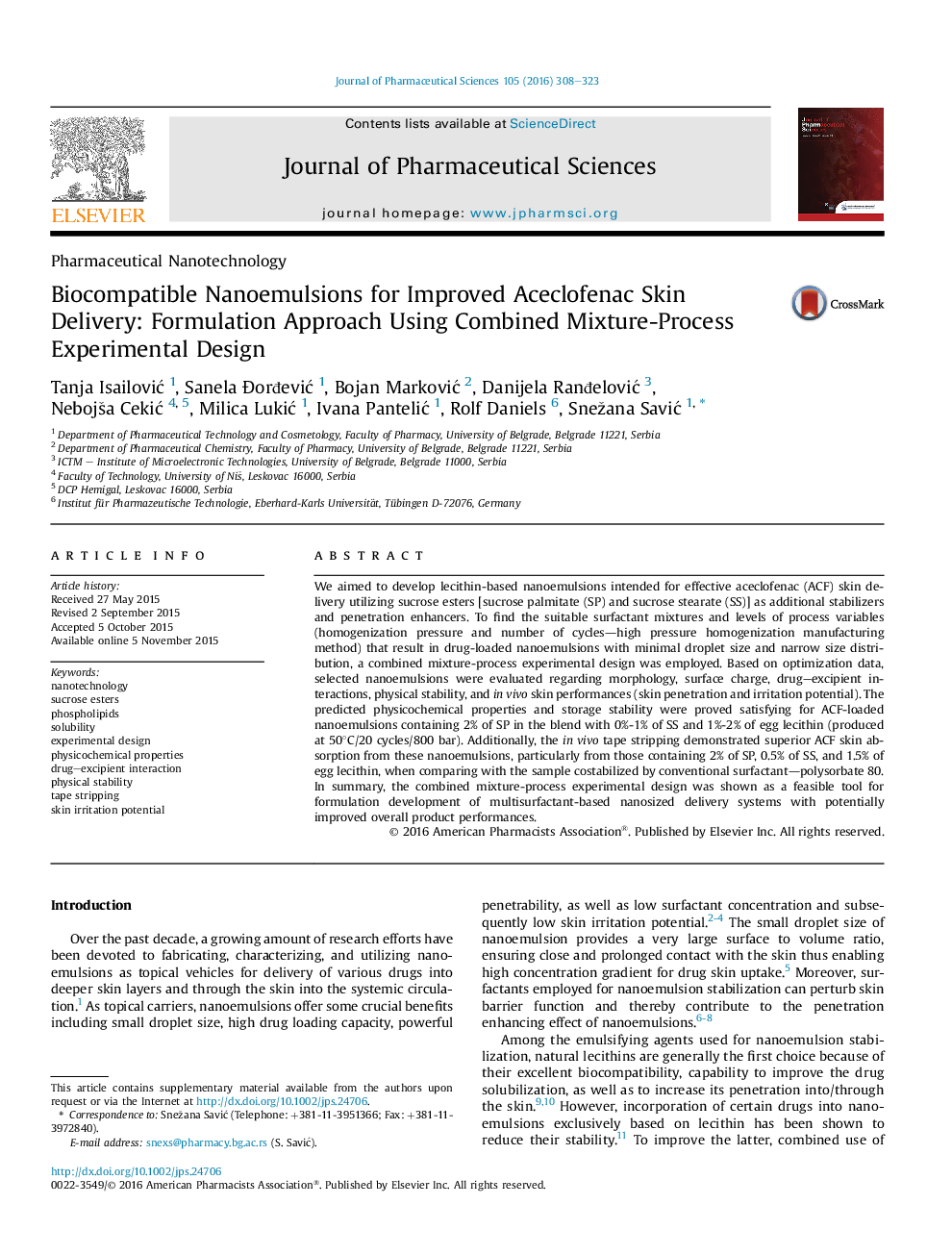| Article ID | Journal | Published Year | Pages | File Type |
|---|---|---|---|---|
| 2484466 | Journal of Pharmaceutical Sciences | 2016 | 16 Pages |
Abstract
We aimed to develop lecithin-based nanoemulsions intended for effective aceclofenac (ACF) skin delivery utilizing sucrose esters [sucrose palmitate (SP) and sucrose stearate (SS)] as additional stabilizers and penetration enhancers. To find the suitable surfactant mixtures and levels of process variables (homogenization pressure and number of cycles-high pressure homogenization manufacturing method) that result in drug-loaded nanoemulsions with minimal droplet size and narrow size distribution, a combined mixture-process experimental design was employed. Based on optimization data, selected nanoemulsions were evaluated regarding morphology, surface charge, drug-excipient interactions, physical stability, and in vivo skin performances (skin penetration and irritation potential). The predicted physicochemical properties and storage stability were proved satisfying for ACF-loaded nanoemulsions containing 2% of SP in the blend with 0%-1% of SS and 1%-2% of egg lecithin (produced at 50°C/20 cycles/800 bar). Additionally, the in vivo tape stripping demonstrated superior ACF skin absorption from these nanoemulsions, particularly from those containing 2% of SP, 0.5% of SS, and 1.5% of egg lecithin, when comparing with the sample costabilized by conventional surfactant-polysorbate 80. In summary, the combined mixture-process experimental design was shown as a feasible tool for formulation development of multisurfactant-based nanosized delivery systems with potentially improved overall product performances.
Keywords
Related Topics
Health Sciences
Pharmacology, Toxicology and Pharmaceutical Science
Drug Discovery
Authors
Tanja IsailoviÄ, Sanela ÄorÄeviÄ, Bojan MarkoviÄ, Danijela RanÄeloviÄ, NebojÅ¡a CekiÄ, Milica LukiÄ, Ivana PanteliÄ, Rolf Daniels, Snežana SaviÄ,
